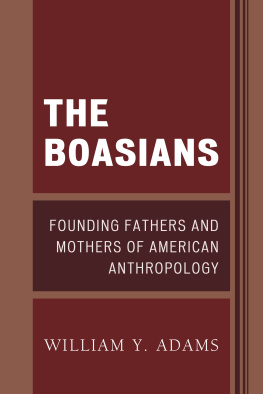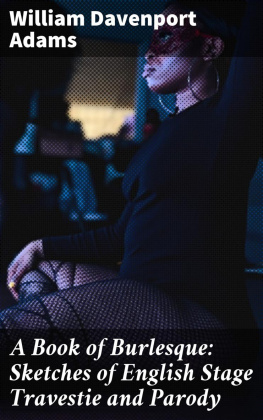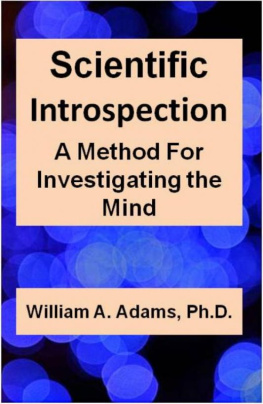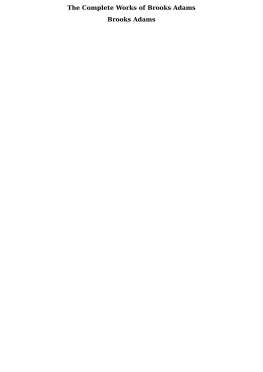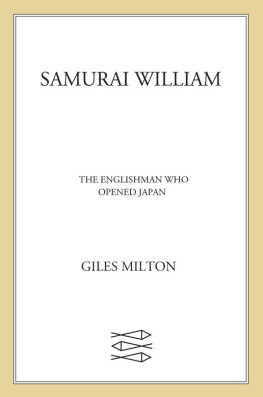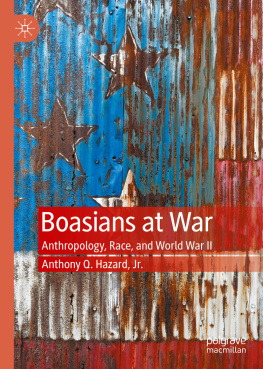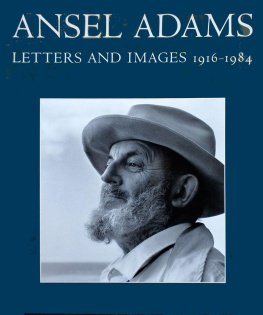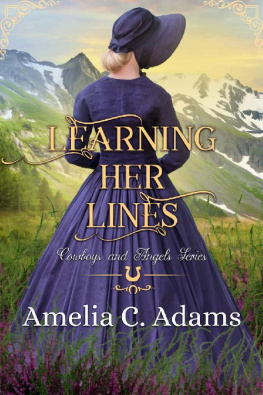William Y. Adams - The Boasians
Here you can read online William Y. Adams - The Boasians full text of the book (entire story) in english for free. Download pdf and epub, get meaning, cover and reviews about this ebook. year: 2016, publisher: Hamilton Books, genre: Detective and thriller. Description of the work, (preface) as well as reviews are available. Best literature library LitArk.com created for fans of good reading and offers a wide selection of genres:
Romance novel
Science fiction
Adventure
Detective
Science
History
Home and family
Prose
Art
Politics
Computer
Non-fiction
Religion
Business
Children
Humor
Choose a favorite category and find really read worthwhile books. Enjoy immersion in the world of imagination, feel the emotions of the characters or learn something new for yourself, make an fascinating discovery.
- Book:The Boasians
- Author:
- Publisher:Hamilton Books
- Genre:
- Year:2016
- Rating:3 / 5
- Favourites:Add to favourites
- Your mark:
- 60
- 1
- 2
- 3
- 4
- 5
The Boasians: summary, description and annotation
We offer to read an annotation, description, summary or preface (depends on what the author of the book "The Boasians" wrote himself). If you haven't found the necessary information about the book — write in the comments, we will try to find it.
The Boasians — read online for free the complete book (whole text) full work
Below is the text of the book, divided by pages. System saving the place of the last page read, allows you to conveniently read the book "The Boasians" online for free, without having to search again every time where you left off. Put a bookmark, and you can go to the page where you finished reading at any time.
Font size:
Interval:
Bookmark:
The Boasians
Founding Fathers and Mothers
of American Anthropology
William Y. Adams
Hamilton Books
An Imprint of
Rowman & Littlefield
Lanham Boulder New York Toronto Plymouth, UK
Copyright 2016 by Hamilton Books
4501 Forbes Boulevard, Suite 200, Lanham, Maryland 20706
Hamilton Books Acquisitions Department (301) 459-3366
Unit A, Whitacre Mews, 26-34 Stannary Street,
London SE11 4AB, United Kingdom
All rights reserved
Printed in the United States of America
British Library Cataloguing in Publication Information Available
Library of Congress Control Number: 2016938993
ISBN: 978-0-7618-6802-6 (pbk : alk. paper)ISBN: 978-0-7618-6803-3 (electronic)
 TM The paper used in this publication meets the minimum requirements of American National Standard for Information Sciences Permanence of Paper for Printed Library Materials, ANSI/NISO Z39.48-1992.
TM The paper used in this publication meets the minimum requirements of American National Standard for Information Sciences Permanence of Paper for Printed Library Materials, ANSI/NISO Z39.48-1992.
To the memory of my teacher,
ROBERT H. LOWIE
A great scholar and a great gentleman
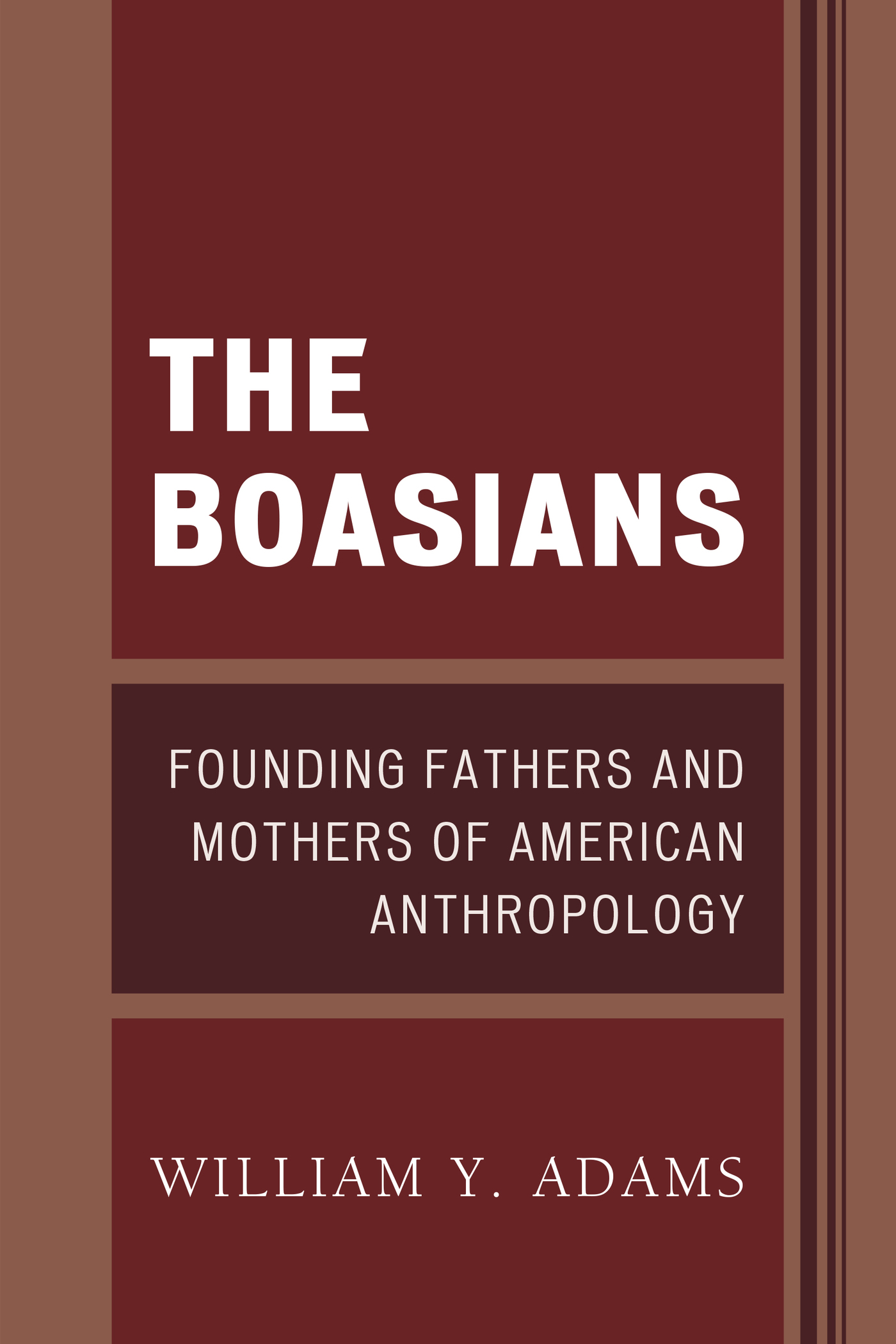
All photos appear at the beginning of relevant chapters.
Franz BoasCourtesy of the Division of Anthropology, American Museum of Natural History
Clark WisslerCourtesy of the Division of Anthropology, American Museum of Natural History
Alfred L. KroeberCourtesy of the Bancroft Library, University of California, Berkeley
Robert H. LowieCourtesy of the Bancroft Library, University of California, Berkeley
Edward SapirArchives and Special Collections Library, Vassar College
Paul RadinKindly provided by Holly Buchanan
Melville HerskovitsCourtesy of Northwestern University Library
Elsie Clews ParsonsCourtesy of the American Philosophical Society
Ruth BenedictArchives and Special Collections Library, Vassar College
Margaret MeadKindly provided by Mary Catherine Bateson
On August 28, 1883, a 25-year-old German named Franz Boas stepped ashore on the coast of Baffinland, the most easterly of Canadas huge Arctic islands. A recently minted PhD in physical geography, he had wangled a commission from the German Polar Institute to spend a year surveying and mapping a portion of the Baffin Coast. His reasons for undertaking this enterprise remain to this day somewhat uncertain, a subject that will be further considered in Chapter 3.
It was not altogether a foray into the unknown. There were already several whaling stations established on the Baffin coast, and one of these was to serve as Boas headquarters in the intervals between his numerous exploring trips. With the aid of the station chief, acting as interpreter, he began as soon as possible to make inquiries among the Inuit visitors who came continually to the station. Later, as his command of the language increased, he was able to conduct his inquiries without the aid of an interpreter. Much of his information was gained in the course of long exploring trips by dogsled, accompanied by one or two Inuit guides.
Boas found the Inuits eager to talk about their native way of life, and he was an equally eager listener. By the end of a year he had accumulated far more ethnographic than topographic information. It found its way initially into a series of articles, and then, in 1888, into Boas first book, The Central Eskimo (Boas 1888). It is the first comprehensive ethnography of a native American people ever published. The young scientist had come to Baffinland a physical geographer; he left it an ethnographer, determined to devote the remainder of his career to the study of Homo sapiens.
Three weeks before his departure for Baffinland, Boas had become engaged to Marie Krakowizer, the German-American girl whom in due course he married. Throughout his time in Baffinland he wrote to her continually, if not quite daily. Since there was no way of posting the letters, they accumulated into what became a kind of epistolary diary, eventually 500 pages long. Years later it was translated into English by Boas daughter, but has never been published in full.
The available passages (D. Cole 1983) however are of inestimable historical value, for they reveal more about the true character of this complex, intensely private man than does any subsequent writing, by Boas or anyone else. The author pours out his love unrestrainedly for his sweetheart, but he also reveals other, more unexpected passions. At one point we read that I do not want a German professorship because I know I would be restricted to science and to teaching, for which I have little inclination..... What I want to live and die for, is equal rights for all, equal possibilities to learn and work for poor and rich alike! Dont you believe that to have done even the smallest bit for this, is more than all science taken together? (D. Cole 1983, 37). This from a man who was to devote the last 43 years of his life to science and to teaching, toward which he professed an icy enthusiasm! (Kardiner and Preble 1961, 144).
In fact, Boas had it right the first time. He was not a theorist, and not always a scientist; he was an ideologue. It was his passionate dedication to egalitarian ideology that led him to oppose any theory, including social evolution, that seemed to imply inequality among peoples. It is the leitmotiv that runs through all of his diverse works in ethnology, linguistics, and physical anthropology, as well as newspaper articles. And it was in time to become one of the powerful components of Boasian anthropology, resonating in the work of all his students. Equality of societies, equality of cultures, equality of languages, equality of races, with none superior to any other. It remains the strongest single Boasian legacy surviving in anthropology today.
The years following his return from Baffinland were professionally unsettled ones for the young Boas, partly because he was seeking to enter a field for which he had no formal training. He held relatively brief appointments, first as a museum assistant and then as a university docent, in Berlin, but he had already, in his Baffinland diary, expressed a preference for living in America. The opportunity came when, in 1887, he was offered a position as Assistant Editor of Science magazine, then published in New York.
His situation nevertheless remained unsettled, and over the next decade he held a series of short-term positions, variously with a magazine, a university, museums, and exhibitions. Some were temporary by design; others were ended by disputes, for Boas always had trouble accepting authority, from anyone (see Kardiner and Preble 1961, 139). Then, in 1899, he was appointed Professor of Anthropology at Columbia University; one of only three such professors in North America at the time, and the only one authorized to offer the doctorate. Over the next 43 years he was to award more than fifty of them, and he and his students together crafted what came to be known as Boasian anthropology. Those students, whom we call the Boasians, were the only anthropology PhDs in America for a decade and more; they were the pioneers who in time spread the Boasian doctrine throughout the country. Together with their mentor, they laid the entire institutional foundation of the discipline as we know it today; not only university programs and curricula but professional societies and their journals, anthropological monograph series, and museum programs focusing on people rather than things.
Font size:
Interval:
Bookmark:
Similar books «The Boasians»
Look at similar books to The Boasians. We have selected literature similar in name and meaning in the hope of providing readers with more options to find new, interesting, not yet read works.
Discussion, reviews of the book The Boasians and just readers' own opinions. Leave your comments, write what you think about the work, its meaning or the main characters. Specify what exactly you liked and what you didn't like, and why you think so.

